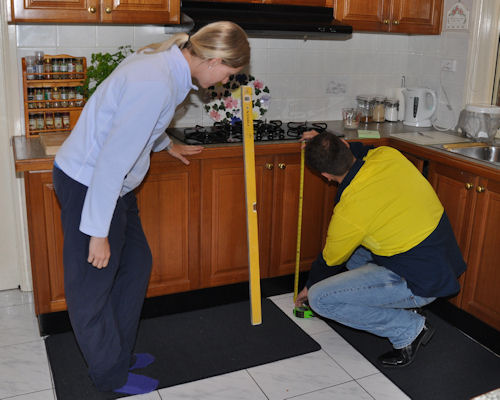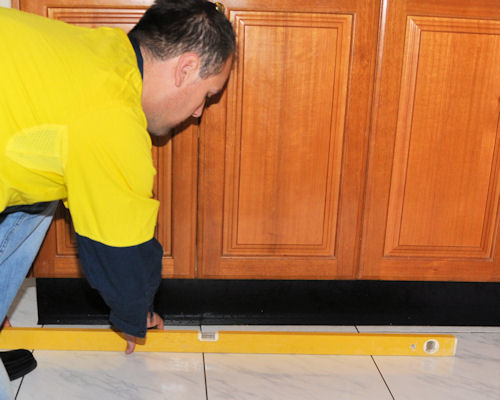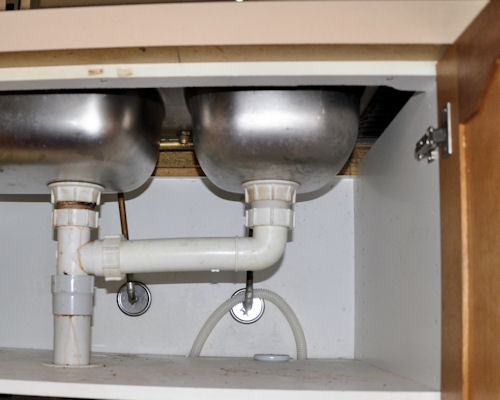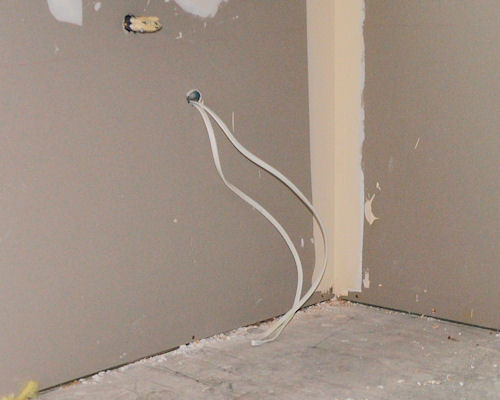The assessment process
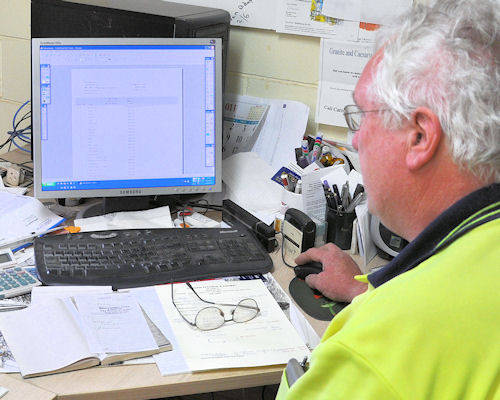 Audio for slide 1 (mp3 |6|KB)
Audio for slide 1 (mp3 |6|KB)
Below are the typical steps involved in organising and carrying out a site assessment.
1. Read through the design brief and project plans
Before you go out to the site, you should familiarise yourself with the details of the project. We covered the basic elements of the design brief and project plans in the following lessons from the unit Processes in kitchen and bathroom projects. You can go back to those lessons by clicking on the following links:

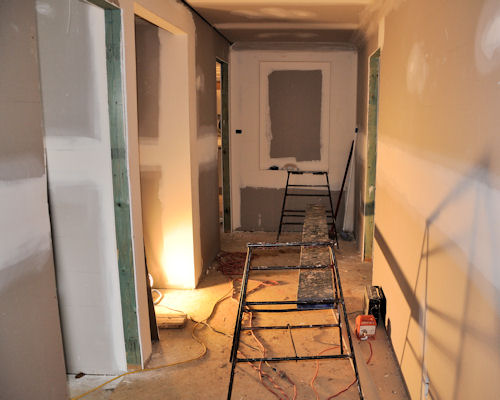 Audio for slide 7 (mp3 |6|KB)
Audio for slide 7 (mp3 |6|KB)
It might not be possible to do all of these things in the one visit.
This is particularly the case if your initial site assessment is carried out before other trades complete work that has to be done in advance of your installation.
We'll look in greater detail at some of these aspects of the site assessment throughout the rest of this unit.


Learning activity
Audio 8 (mp3 |6|KB)There's more to a site assessment than just checking out the kitchen or bathroom you'll be working in. You also have to look to the future and ask:
- Who else will be working on site when I come back to do the installation?
- What things might be happening that would affect my work?
See if you can list some of the possible problems if the following work was being carried out when you arrive with the cabinets and your installation team:
- The front driveway is being excavated for a concrete pour
- A floor sander will be sanding the dining room, which adjoins the kitchen.
- The drainer is digging a trench across the property to lay the drainage pipes.
Share your answers with your trainer and other learners in the group.



